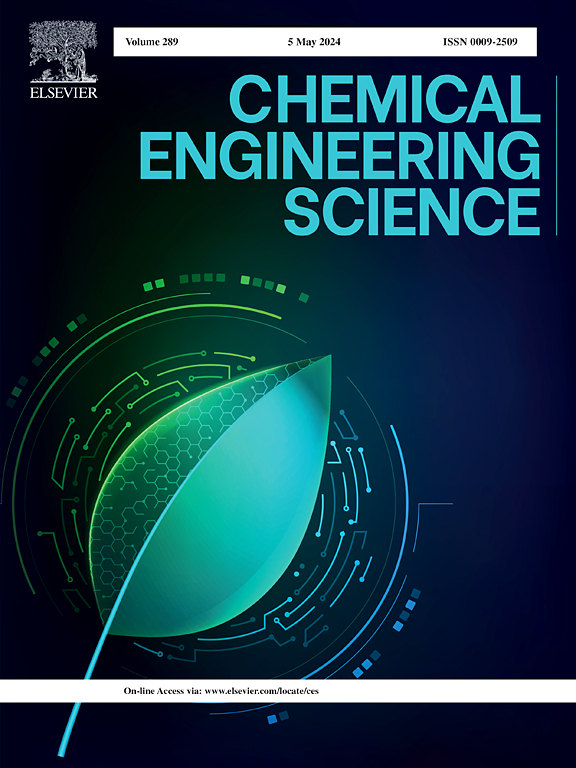Adhesion behavior and influencing factors of crude oil on rock surface in ultra-deep tight reservoir- insights from molecular dynamics
IF 4.1
2区 工程技术
Q2 ENGINEERING, CHEMICAL
引用次数: 0
Abstract
The development of ultra-deep tight reservoirs is paramount to the global energy supply. However, their unique conditions hindering efficient development. This study focuses on ultra-deep tight reservoirs in Shunbei Oilfield, leveraging molecular dynamics simulation to establish a crude oil adhesion model. We delve into the adhesion dynamics, relative concentration, interaction energy, and morphology to understand the distribution of crude oil on rock surfaces. Utilizing different component models, we clarify the adhesion mechanisms and distribution of different oil components on rock surface. Finally, the effects of temperature and pressure on adhesion were investigated. Notably, the adhesion of crude oil components is governed by their composition and polarity strength, with resin and asphaltene being strongly polar, aromatic weakly polar, and saturated non-polar. Surprisingly, saturated adhere fastest to rock surface, whereas asphaltenes adhere slowest due to their strong polar interactions that hinder detachment from crude oil droplet. During adhesion, the electrostatic force (−7115.85 kJ/mol) significantly outweighs the van der Waals force (−1753.72 kJ/mol). For non-polar components, van der Waals interactions prevail, while electrostatic potential dominates for polar components. The robust interaction between polar components and rock surface enhances their stable adhesion, with asphaltene exhibiting the strongest adhesion, followed by resin, aromatic, and saturated. Temperature exerts a notable influence on crude oil adhesion, while pressure’s impact is relatively minor. Rising temperatures boost molecular activity, facilitating initial adhesion but weakening long-term interactions with rock surface, ultimately diminishing the final adhesion state. Despite pressure variations influencing adhesion dynamics, the final adhesion efficiency (85 %-90 %), interaction energy (9000–9500 kJ/mol), relative concentration peaks (around 13), adhesion morphology (1.75–1.85 nm), and mean square displacement (40 nm2) remain largely consistent.
超深层致密储层原油在岩石表面的粘附行为及其影响因素——分子动力学研究
开发超深层致密油藏对全球能源供应至关重要。然而,其独特的条件阻碍了高效开发。本研究以顺北油田的超深层致密油藏为研究对象,利用分子动力学模拟建立原油粘附模型。我们深入研究了粘附动力学、相对浓度、相互作用能量和形态,以了解原油在岩石表面的分布。利用不同的成分模型,我们阐明了不同石油成分在岩石表面的粘附机制和分布。最后,研究了温度和压力对附着力的影响。值得注意的是,原油成分的附着力受其成分和极性强度的影响,树脂和沥青质为强极性,芳烃为弱极性,饱和为非极性。令人惊讶的是,饱和质在岩石表面的粘附速度最快,而沥青质由于其强烈的极性相互作用阻碍了与原油液滴的分离,因此粘附速度最慢。在粘附过程中,静电力(-7115.85 kJ/mol)大大超过了范德华力(-1753.72 kJ/mol)。对于非极性成分,范德华相互作用力占主导地位,而对于极性成分,静电势占主导地位。极性成分与岩石表面之间的强大相互作用增强了它们的稳定粘附力,其中沥青质粘附力最强,其次是树脂质、芳香质和饱和质。温度对原油附着力有显著影响,而压力的影响相对较小。温度升高会提高分子活性,促进最初的附着,但会削弱与岩石表面的长期相互作用,最终降低最终的附着状态。尽管压力变化会影响附着动力学,但最终附着效率(85%-90%)、相互作用能量(9000-9500 kJ/mol)、相对浓度峰值(约 13)、附着形态(1.75-1.85 nm)和均方位移(40 nm2)在很大程度上保持一致。
本文章由计算机程序翻译,如有差异,请以英文原文为准。
求助全文
约1分钟内获得全文
求助全文
来源期刊

Chemical Engineering Science
工程技术-工程:化工
CiteScore
7.50
自引率
8.50%
发文量
1025
审稿时长
50 days
期刊介绍:
Chemical engineering enables the transformation of natural resources and energy into useful products for society. It draws on and applies natural sciences, mathematics and economics, and has developed fundamental engineering science that underpins the discipline.
Chemical Engineering Science (CES) has been publishing papers on the fundamentals of chemical engineering since 1951. CES is the platform where the most significant advances in the discipline have ever since been published. Chemical Engineering Science has accompanied and sustained chemical engineering through its development into the vibrant and broad scientific discipline it is today.
 求助内容:
求助内容: 应助结果提醒方式:
应助结果提醒方式:


